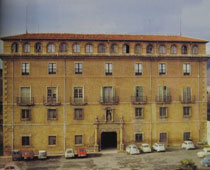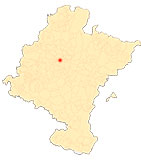18th Century Pamplona Palaces
Episcopal Palace of Pamplona
Although Sancho "the Strong" ceded the Royal Palace of Pamplona to the Pamplona mitre in 1198, it reverted to the crown in 1255. Since then there have been numerous confrontations and exchanges between the two parties to determine the ownership of the property. With the annexation of Navarre to the Castilian crown, the viceroys installed there their residency program. For their part, the bishops from the 16th century installed their residency program in the house of the Constable of Navarre on Calle Mayor, as tenants. However, in the 18th century, due to the inconveniences and its distance from the cathedral, as well as the Roman bull issued by Benedict XIII, the construction of the current palace was undertaken. The bishop, Melchor Ángel Gutiérrez Vallejo, met with representatives of the cathedral chapter and the clergy of Navarre to sign an agreement to obtain funds for the new construction. Thus, in 1734 the works began, which were completed under the archbishopric of Don Ignacio Añoa y Busto, who years later would hold the mitre of Zaragoza. The main door, surrounded by lugs and crowned by San Fermín bishop, presents in its lintel three elements typical of those who lived there: mitre, crosier and tasseled episcopal hat, supported by angels.
ANDUEZA UNANUA, Pilar, La arquitectura señorial de Pamplona en el siglo XVIII. Familias, urbanismo y ciudad, Pamplona, Government of Navarre, 2004.












